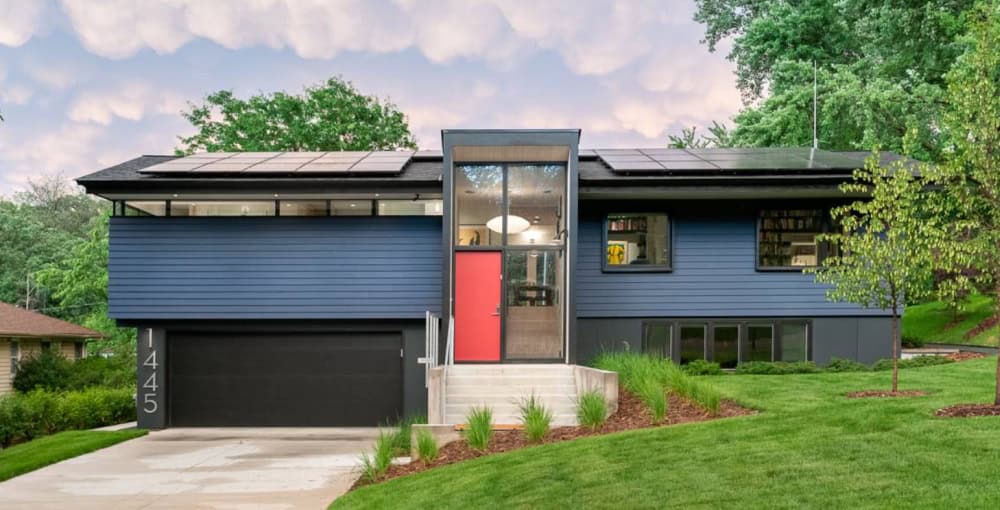Landscaping for Sustainability
Drop a Line if you have a Question!
Landscaping
Are you looking to create an environmentally-friendly landscape that not only enhances your outdoor space but also promotes sustainability? Look no further!
In this article, we will explore the benefits of sustainable landscaping and provide you with essential elements and water conservation techniques to help you build a sustainable garden.
We will also discuss the importance of incorporating native plants and biodiversity. Get ready to transform your landscape into a sustainable haven with these helpful tips!

Benefits of Sustainable Landscaping
You’ll be amazed at the numerous benefits of sustainable landscaping. By implementing sustainable practices in your landscaping, you can significantly decrease the amount of water needed to maintain your plants and lawn. This not only saves you money on your water bill but also helps to conserve this precious resource.
Sustainable landscaping techniques help to improve soil health by using organic fertilizers, compost, and mulch. These natural amendments enrich the soil, promoting healthier plant growth and reducing the need for chemical fertilizers that can harm the environment.
Sustainable landscaping also creates habitats for beneficial insects, birds, and wildlife, fostering biodiversity in your yard. Moreover, it enhances the aesthetic appeal of your property, adding value and beauty to your outdoor space.
Essential Elements of a Sustainable Landscape
To create a sustainable landscape, it’s important to incorporate essential elements such as native plants and efficient irrigation systems.
By using native plants, you can reduce water usage and support local ecosystems. These plants are adapted to the local climate and require less water, fertilizer, and pesticides. Additionally, they provide habitat for native wildlife.
Efficient irrigation systems are crucial for conserving water. Drip irrigation, for example, delivers water directly to plant roots, reducing evaporation and runoff. You can also install rain sensors and smart controllers that adjust watering schedules based on weather conditions.
Another important element is soil health. By adding organic matter and practicing proper mulching techniques, you can improve soil structure, increase water retention, and reduce the need for synthetic fertilizers.
Water Conservation Techniques for Landscaping
Using efficient irrigation systems, such as drip irrigation and smart controllers, can significantly reduce water usage in your landscape. Drip irrigation delivers water directly to the roots of plants, minimizing evaporation and ensuring that water goes exactly where it’s needed. This method can reduce water usage by up to 50%.
Smart controllers use weather data and soil moisture sensors to adjust watering schedules, preventing overwatering and saving water. These controllers can reduce water usage by up to 30%.
Additionally, consider grouping plants with similar water needs together, so you can water them more efficiently. Mulching your landscape beds can also help retain moisture in the soil, reducing the need for frequent watering.
Native Plants and Biodiversity in Sustainable Landscaping
By incorporating native plants into your landscape, you can support biodiversity and create a thriving ecosystem.
Native plants are species that naturally occur in your region and have adapted to the local climate and soil conditions.
They provide essential habitat and food sources for native wildlife such as birds, butterflies, and bees.
Unlike non-native plants, native plants require less water, fertilizer, and pesticides, making them more sustainable and environmentally friendly.
By choosing native plants for your landscape, you can help conserve water, reduce pollution, and decrease the need for maintenance.
Additionally, native plants promote the health of the soil by increasing its organic matter and preventing erosion.
Tips for Maintaining a Sustainable Landscape
Maintaining a sustainable landscape requires regular watering, mulching, and pruning to keep your plants healthy and thriving.
Watering is essential to ensure that your plants receive the necessary moisture for growth. Be sure to water deeply and infrequently to encourage deep root growth and reduce water waste.
Mulching is another important practice as it helps to retain moisture in the soil, suppresses weeds, and regulates soil temperature. Apply a layer of organic mulch around your plants to reap these benefits.
Lastly, pruning is crucial for maintaining the shape and health of your plants. Remove dead or damaged branches and ensure adequate airflow to prevent disease and promote healthy growth.
Conclusion
So there you have it, the importance of sustainable landscaping and how you can incorporate it into your own outdoor space.
By implementing water conservation techniques, using native plants, and maintaining your landscape properly, you can contribute to a more sustainable environment.
Remember, small changes can make a big difference, so why not start making your landscape more sustainable today?

Have a question?
Become a
























